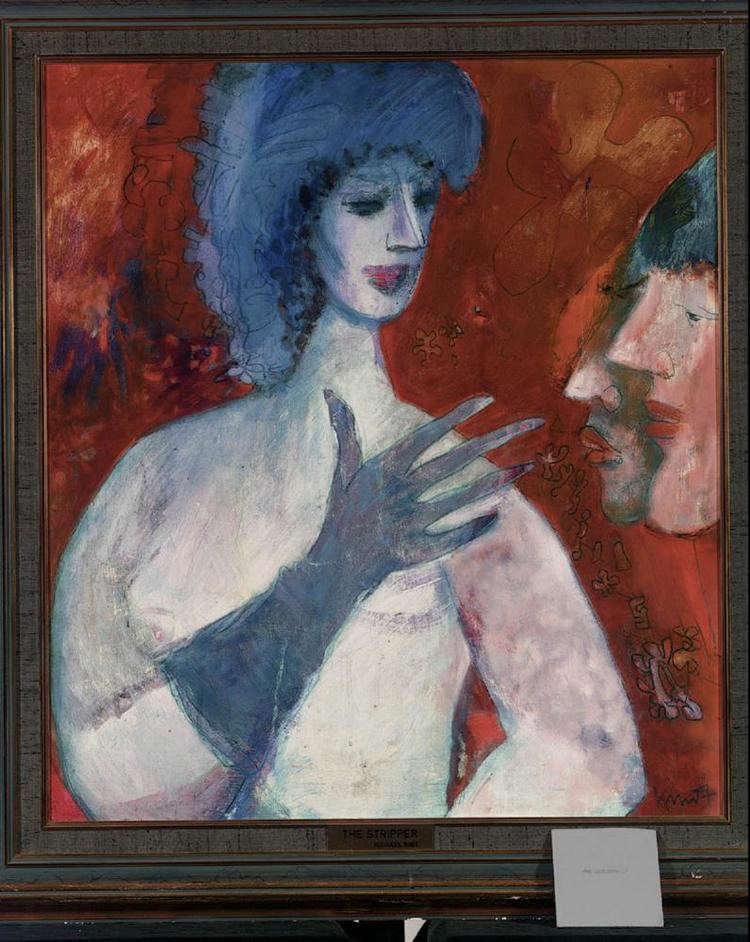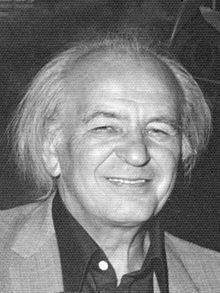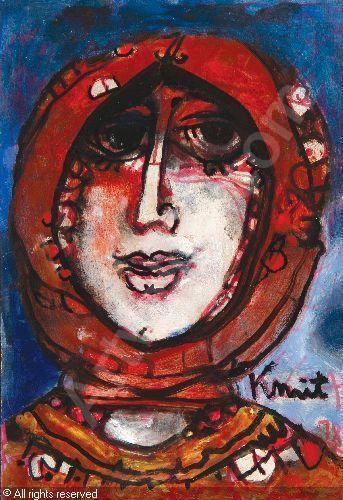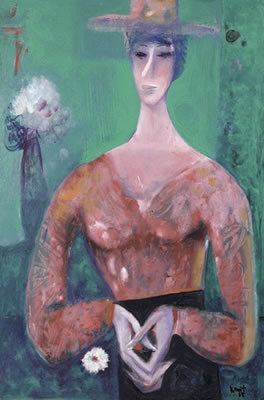Role Artist Name Michael Kmit | ||
 | ||
Notable work Evangelist John Mark, The Voice of Silence, Philopena Movement neo-Byzantine, Cubism, Constructivism Artwork The three wise men, The voice of silence, Girl in green Similar Mykhaylo Khmelko, Mykhaylo Berkos, Mychajlo Dmytrenko | ||
Michael Kmit (Ukrainian: Михайло Кміт) (25 July 1910 in Stryi, Lviv – 22 May 1981 in Sydney, Australia) was a Ukrainian painter who spent twenty-five years in Australia. He is notable for introducing a neo-Byzantine style of painting to Australia, and winning a number of major Australian art prizes including the Blake Prize (1952) and the Sulman Prize (in both 1957 and 1970). In 1969 the Australian artist and art critic James Gleeson described Kmit as "one of the most sumptuous colourists of our time".
Contents

Arrival in Australia

Michael Kmit studied at the Academy of Fine Arts, Kraków, but due to the conflict in World War II, he was forced to leave his homeland and found himself a displaced person in Innsbruck, Austria where he met Dorothea (Edda) in 1945. They married in Landeck and later moved to Bregenz where his two daughters, Xenia & Tania (Tatiana) were born, in 1946 and 1948. While in post-war Europe Kmit studied under cubist Fernand Léger in Paris, and futurist Carlo Carrà in Italy.

Kmit emigrated to Australia in 1949, as part of the Australian Government's immigration scheme. He was contracted to work in Sydney for two years in a job selected for him by the Australian Government's employment service. He initially worked at a cement factory in Villawood, New South Wales, and then as a railway porter as contracted reimbursement for his passage. But after Kmit met the artists James Gleeson and Paul Haefliger, who were impressed with his work, he was introduced to other artists including Donald Friend and Russell Drysdale. His artist friends later helped him find lodging at Merioola and work nearer to the artist community in Sydney. Painting at night, during the day Kmit worked as a railway porter and cleaner while he established himself "as one of Australia's best artists" of the time. He lived in Elizabeth Bay with his family until he moved to the United States.
Influence on Australian Art
Kmit's images, inspired by the Byzantine style of religious icon painting, were well received in Australia for their fresh approach and new subjects. Labeled neo-Byzantine, his paintings integrated stylized portraiture with geometric cubist and constructivist forms, patterns and vivid color.
During the 1950s, before leaving for the United States at the latter end of the decade, Kmit was a major influence on many artists, particularly those of the Merioola Group (also known as the "Charm School"). Gleeson described Kmit as "one of the most sumptuous colourists of our time". Paul Haefliger wrote: "Of all the foreign aspirants to art who have visited these shores since the war, Michael Kmit is the only one who has made an impression on the present generation of painters."
After winning a string of awards including the Blake Prize (1953) and the Sulman Prize (1957), he left Australia for the United States in 1958, residing in the San Francisco-Bay Area of California. His American period did not result in a lot of success and also, due to the end of his marriage, he went through a period of depression. Returning in 1965 his style and format had changed and the high praise for his work was replaced with cautious criticism. He married Norma Randall a few years after his return to Australia and his son Michael Kmit Junior was born in May, 1968. However, by the time "Cassandra" (1979) was painted, only two years before his death, Kmit had returned to the previous vigour of his 1950s works.
Exhibitions
In 1951 Michael Kmit showed his work for the first time in Brisbane at the Johnstone Gallery, where the owner Brian Johnstone intended to exhibit "the most creative work in Australia today", particularly that of "brilliant" younger artists. Until his death Kmit exhibited in numerous group shows throughout the Australian States of Queensland, Victoria, Western Australia, Tasmania, New South Wales and South Australia, including selections for the Archibald, Wynne and Sulman prizes.
Kmit was a member and exhibited with the Sydney branch of the Contemporary Art Society, the "Sydney Group" and the Society of Artists. He was also an honorary member, and exhibited with the Ukrainian Artists Society of Australia.
A selection of exhibitions included:
